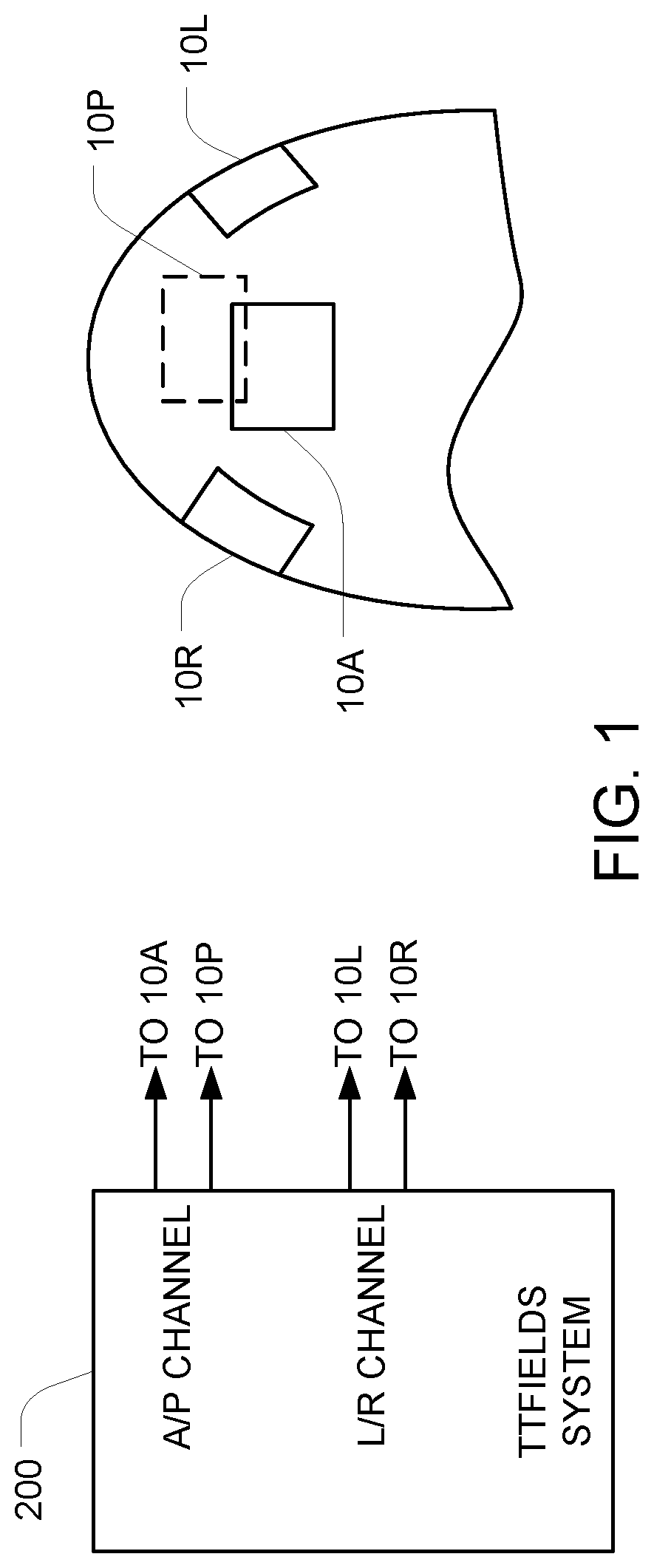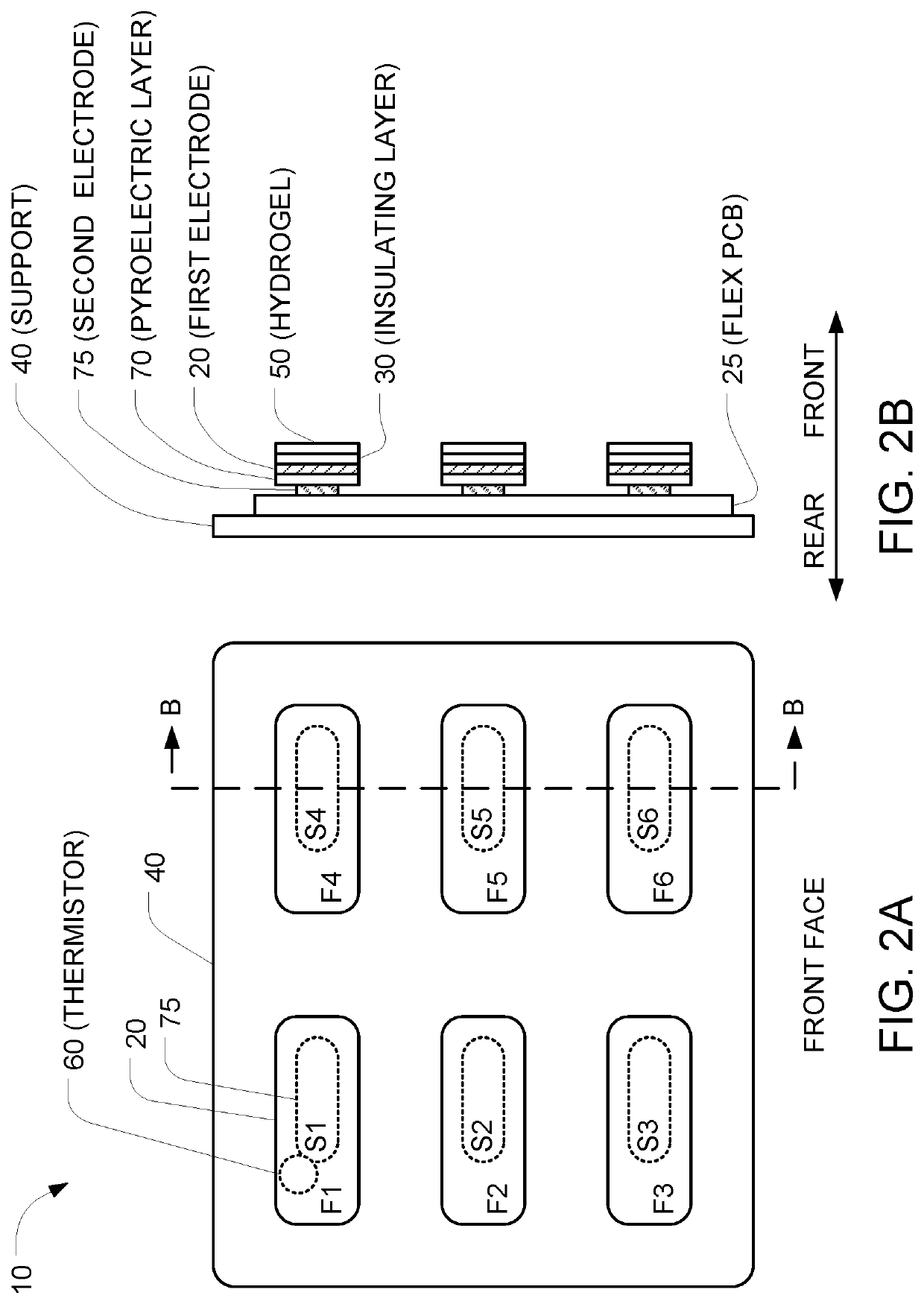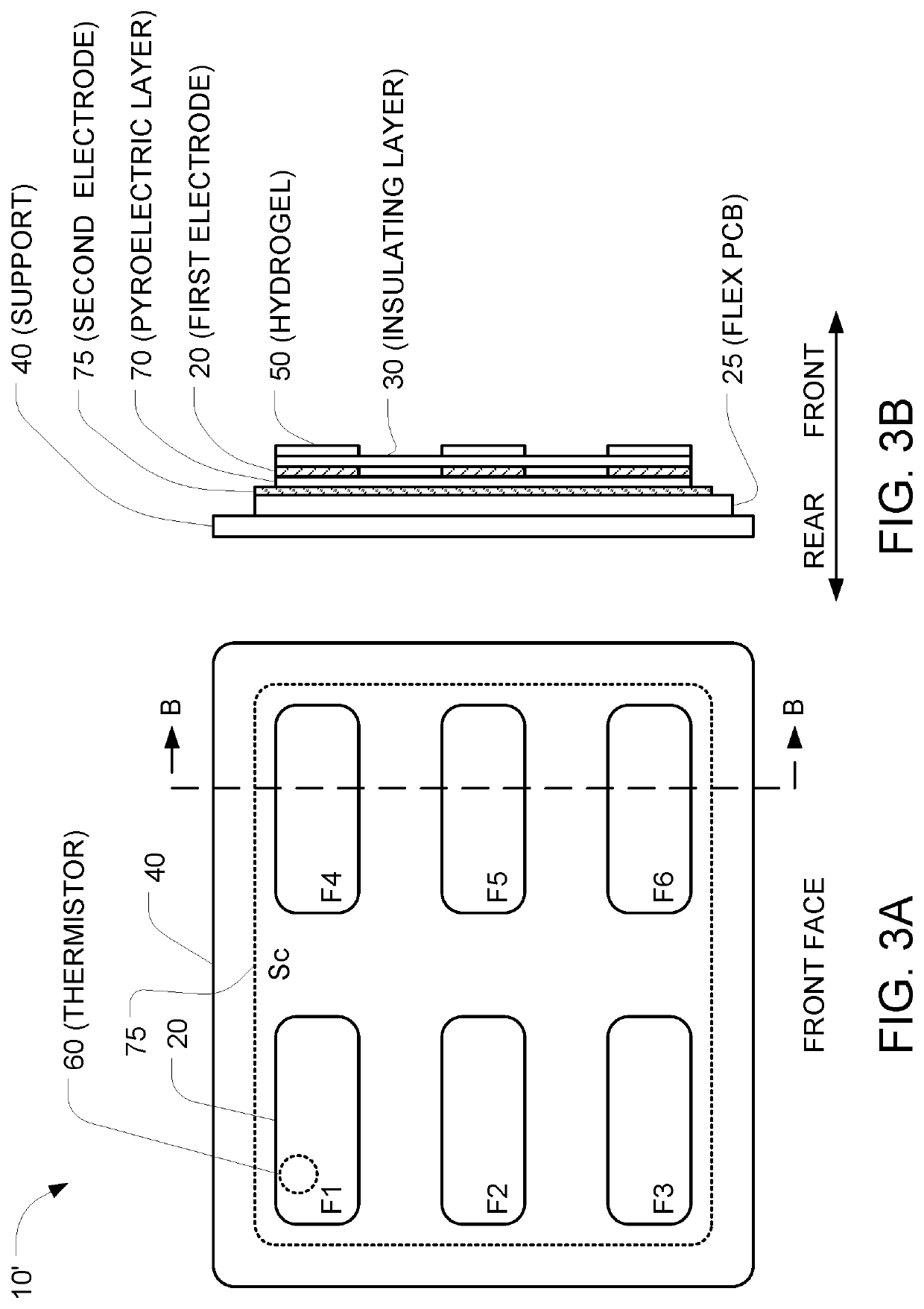Pyroelectric-Based Temperature Sensing of Transducer Arrays for Applying Tumor Treating Fields (TTFields)
a transducer array and temperature sensing technology, applied in the direction of head electrodes, internal electrodes, therapy, etc., can solve the problems of increasing the cost of the optuneTM system, and increasing the size, weight and cost of the transducer array. , to achieve the effect of less flexible, thicker cables and more cumbersom
- Summary
- Abstract
- Description
- Claims
- Application Information
AI Technical Summary
Benefits of technology
Problems solved by technology
Method used
Image
Examples
Embodiment Construction
[0037]FIG. 1 is a system block diagram of an embodiment in which a TTFields system 200 drives a set of TTFields transducer arrays 10L, 10R, 10A, and 10P with AC signals at a frequency between 50 and 500 kHz or between 50 kHz and 1 MHz. One pair of transducer arrays (10L / 10R) is positioned to the left and right of the tumor, and the other pair of transducer arrays (10A / 10P) is positioned anterior and posterior to the tumor.
[0038]As described below in connection with FIGS. 2-3, each of the transducer arrays includes a plurality of individual electrode elements. And as described below in connection with FIG. 4, the TTFields system 200 (a) applies an AC voltage between selected electrode elements within the left transducer array 10L and selected elements within the right transducer array 10R for an interval of time (e.g., one second); then (b) applies an AC voltage between selected electrode elements within the anterior transducer array 10A and selected elements within the posterior tra...
PUM
| Property | Measurement | Unit |
|---|---|---|
| dielectric constant | aaaaa | aaaaa |
| temperatures | aaaaa | aaaaa |
| frequency | aaaaa | aaaaa |
Abstract
Description
Claims
Application Information
 Login to View More
Login to View More - R&D
- Intellectual Property
- Life Sciences
- Materials
- Tech Scout
- Unparalleled Data Quality
- Higher Quality Content
- 60% Fewer Hallucinations
Browse by: Latest US Patents, China's latest patents, Technical Efficacy Thesaurus, Application Domain, Technology Topic, Popular Technical Reports.
© 2025 PatSnap. All rights reserved.Legal|Privacy policy|Modern Slavery Act Transparency Statement|Sitemap|About US| Contact US: help@patsnap.com



